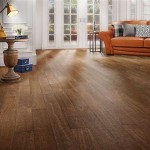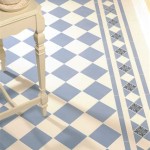Vinyl Click and Lock Flooring: A Comprehensive Guide
Vinyl click and lock flooring, also known as floating vinyl flooring or luxury vinyl planks (LVP) with a click system, has emerged as a popular choice for homeowners and commercial property managers. This flooring type presents a cost-effective, durable, and aesthetically versatile alternative to traditional materials like hardwood, tile, and laminate. Understanding the composition, installation process, advantages, disadvantages, and maintenance requirements of vinyl click and lock flooring is crucial for making informed decisions about its suitability for specific applications.
At its core, vinyl click and lock flooring comprises multiple layers fused together to create a stable and resilient surface. While specific layer compositions can vary between manufacturers and product lines, a typical construction includes a wear layer, a decorative film layer, a core layer, and often, an underlayment layer. The wear layer, typically made of a clear, protective coating, safeguards the flooring from scratches, stains, and everyday wear and tear. Its thickness directly impacts the flooring’s durability and suitability for high-traffic areas. The decorative film layer provides the visual appeal, mimicking the look of wood, stone, or tile. Advanced printing technologies allow for realistic textures and patterns, enhancing the aesthetic quality of the flooring. The core layer, usually made of PVC (polyvinyl chloride) or WPC (wood-plastic composite) or SPC (stone-plastic composite), provides the structural integrity and water resistance. Finally, an integrated underlayment layer, commonly made of foam or cork, cushions the floor, reduces noise transmission, and improves comfort underfoot. Some products require a separate underlayment installation.
Key Point 1: Understanding the Advantages of Vinyl Click and Lock Flooring
Vinyl click and lock flooring offers a multitude of advantages, contributing to its widespread adoption. Foremost among these is its ease of installation. The click and lock system eliminates the need for adhesives, nails, or specialized tools. Planks or tiles simply interlock, creating a secure and stable floating floor. This characteristic makes it a viable option for DIY enthusiasts, significantly reducing installation costs compared to professionally installed flooring.
Water resistance is another significant advantage. The PVC or WPC/SPC core of vinyl click and lock flooring is inherently resistant to moisture, making it suitable for installation in areas prone to dampness, such as bathrooms, kitchens, and basements. Unlike hardwood, vinyl flooring will not warp, swell, or rot when exposed to water. This resistance also simplifies cleaning, as spills can be easily wiped up without causing permanent damage.
Durability is another compelling factor. Vinyl flooring is designed to withstand heavy foot traffic, scratches, and impacts. The wear layer protects the decorative film from fading and abrasion, ensuring long-lasting aesthetic appeal. The thickness of the wear layer directly correlates with the flooring's ability to withstand wear and tear. Thicker wear layers are generally recommended for commercial applications or areas with high traffic.
Furthermore, vinyl click and lock flooring offers a high degree of design versatility. The decorative film layer can replicate the appearance of various materials, including hardwood, stone, tile, and even abstract designs. Manufacturers offer a wide range of colors, patterns, and textures, allowing homeowners and designers to achieve their desired aesthetic without the high cost and maintenance requirements of natural materials.
Compared to traditional flooring options, vinyl click and lock flooring is relatively affordable. The material costs are typically lower than hardwood, tile, or stone, and the ease of installation can further reduce overall project expenses. This cost-effectiveness makes vinyl flooring an attractive option for budget-conscious consumers.
Finally, vinyl click and lock flooring offers enhanced comfort underfoot. Many products incorporate an integrated underlayment layer, which provides cushioning and reduces noise transmission. This makes the flooring more comfortable to walk on and quieter than hard surfaces like tile or concrete. The underlayment also provides a degree of thermal insulation, contributing to energy efficiency.
Key Point 2: Exploring the Disadvantages and Limitations
While offering numerous benefits, vinyl click and lock flooring also has some disadvantages and limitations that should be carefully considered. While resistant to water, it is not completely waterproof. Prolonged exposure to standing water, especially around seams, can potentially seep underneath the flooring and damage the subfloor. Therefore, it's crucial to address spills promptly and ensure proper sealing of edges, especially in high-moisture environments.
The durability of vinyl flooring, while generally good, is not equal to that of hardwood or stone. While resistant to scratches, sharp objects or heavy furniture can still cause dents or tears, especially in products with thinner wear layers. It is recommended to use furniture pads and avoid dragging heavy objects across the floor to minimize the risk of damage.
Depending on the manufacturing process and materials used, some vinyl flooring products may contain volatile organic compounds (VOCs). VOCs are chemicals that can be released into the air and potentially affect indoor air quality. Look for products that are certified by third-party organizations, such as FloorScore or Greenguard, to ensure low VOC emissions.
Vinyl click and lock flooring is susceptible to fading from prolonged exposure to direct sunlight. UV rays can break down the pigments in the decorative film layer, causing the color to fade over time. Using window coverings, such as blinds or curtains, can help to mitigate this effect.
Unlike hardwood, which can be refinished to restore its original appearance, vinyl flooring cannot be sanded or refinished. Once the wear layer is damaged, the only option is to replace the affected planks or tiles. This limitation can impact the long-term cost of ownership, especially in high-traffic areas.
While offering good sound dampening, vinyl flooring may not provide the same level of noise reduction as carpet or some types of cork flooring. In multi-story buildings, consider adding an extra layer of soundproofing underlayment to minimize noise transmission to lower floors.
Key Point 3: Installation and Maintenance Considerations
The installation of vinyl click and lock flooring is relatively straightforward, but proper preparation and technique are essential for achieving a professional-looking and long-lasting result. First, the subfloor must be clean, level, and dry. Any imperfections, such as cracks, bumps, or unevenness, must be addressed before installation. Use a self-leveling compound to create a smooth and even surface. Remove any existing flooring, baseboards, or trim.
Before starting the installation, allow the vinyl flooring to acclimate to the room's temperature for at least 48 hours. This allows the material to expand or contract, preventing gaps or buckling after installation. Store the flooring in a dry, well-ventilated area.
When installing the flooring, follow the manufacturer's instructions carefully. Typically, planks or tiles are interlocked at an angle and then pressed down to create a secure connection. Use a tapping block and rubber mallet to ensure tight seams without damaging the flooring. Maintain expansion gaps around the perimeter of the room and around any vertical obstructions, such as pipes or door frames.
For maintenance, regular sweeping or vacuuming is sufficient to remove dust and debris. Use a damp mop with a mild detergent to clean the floor as needed. Avoid using abrasive cleaners or harsh chemicals, as these can damage the wear layer. Promptly wipe up spills to prevent staining. Place mats at entrances to trap dirt and moisture. Use furniture pads under heavy objects to prevent scratches and dents.
Periodic deep cleaning may be necessary to remove stubborn stains or buildup. Use a vinyl floor cleaner specifically designed for this purpose. Avoid using steam cleaners, as the heat can damage the flooring. Always follow the manufacturer's instructions for cleaning and maintenance.
If a plank or tile becomes damaged, it can usually be replaced relatively easily. Carefully disconnect the surrounding planks or tiles and remove the damaged piece. Install a new plank or tile in its place, ensuring a secure and level connection. Keep a few extra planks or tiles on hand for future repairs.
By understanding the advantages, disadvantages, installation process, and maintenance requirements of vinyl click and lock flooring, consumers can make informed decisions about whether it's the right choice for their specific needs and applications. Proper installation and maintenance will ensure that the flooring provides years of durable and aesthetically pleasing performance.

Click Lock Flooring Benefits Installation And Underlayment Guide Script Type Application Ld Json Context Http Schema Org Localbusiness Name Dura Undercushions Image Https Duracushion Com Cdn Shop Files

Plastic Click Lock Vinyl Pvc Flooring Lvp Plank Floor Spc Grain Made In Com

Click Lock Floating Flooring

Click Lock Vinyl London Floors Direct

How To Install Vinyl Plank Flooring As A Beginner Home Renovation

What Types Of Click Locking Systems Spc Flooring 3c Rigid Core Luxury Vinyl Plank Pvc Sheeet Manufacturer

Lvt Click Lock Flooring Builtory Product

Luxury Vinyl Locking Systems 101 Nufloors

Xl Ridge Waterproof 8 5mm Click Lock Luxury Vinyl Plank Flooring

The Difference Between Drop Lock And Click Flooring An Expert Guide








